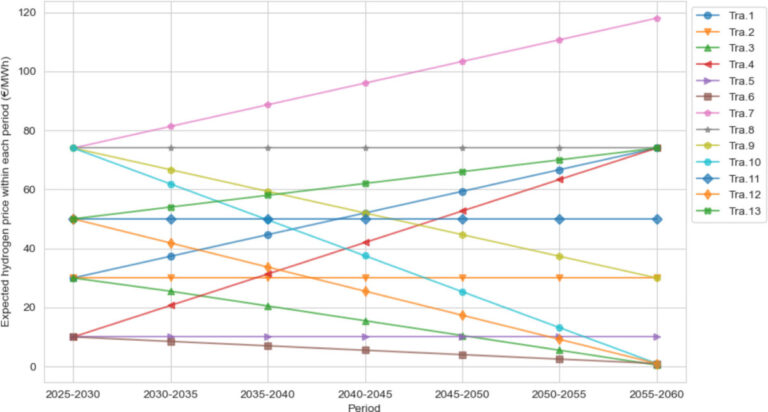New research from Norway has found that deploying around 140 GW of green hydrogen generation capacity by 2050 could make green hydrogen economically viable in Europe. Reaching this scale could help effectively balance system costs while increasing the integration of renewable energy sources, making green hydrogen a self-sustaining technology without subsidies, the scientists said.
Researchers from the Norwegian University of Science and Technology (NTNU) have investigated the effects of incorporating green hydrogen into the European energy system and found that deploying around 140 GW of green hydrogen generation capacity by 2050 could help hydrogen technologies become technically and economically viable.
“Our research indicates that achieving around 140 GW of green hydrogen capacity by 2050 would make green hydrogen economically viable in Europe, but it does not definitively state that lower capacities would make it completely unviable,” says the corresponding author of the study. Mohammedreza Ahang, told pv magazine. “Instead, it emphasizes that achieving this scale will help effectively balance system costs and increase the integration of renewable energy sources, making green hydrogen a self-sustaining technology without subsidies.”
In the study “Investments in green hydrogen as a source of flexibility for the European energy system in 2050: is it worth it?”, published in Applied energyAhang and his colleagues explained that the novelty of their work belied in its comprehensive approach to assessing the economic viability and strategic value of green hydrogen as a source of flexibility within the European energy system by 2050.
“This study uses the European Model for Power System Investment with Renewable Energy (EMPIRE), a stochastic capacity expansion model that integrates both short-term uncertainties and long-term planning,” Ahang said. “Including hydrogen technology as part of the model captures the dynamic and uncertain aspects of energy prices, which significantly impact the feasibility of green hydrogen.”
is RICH an open-source capacity expansion model designed by NTNUT itself to assess optimal capacity investments and system operation in Europe over a medium to long-term planning horizon, typically ranging from 40 to 50 years. It includes the expansion of generation, storage and transmission capacity and aims to minimize total system costs.
Image: Norwegian University of Science and Technology, Applied Energy, Common License CC BY 4.0
“Unlike previous studies that primarily focus on hydrogen costs and conversion efficiency, this study examines the role of green hydrogen in increasing the flexibility of the European energy system,” Ahang further explains. “Our study investigates how green hydrogen can reduce renewable energy curtailment and increase the temporal flexibility of the energy sector, especially in the context of highly variable renewables such as wind and solar.”
The authors analyzed several examples of hydrogen integration, with and without external demand for hydrogen, which they said enabled an in-depth understanding of how demand for hydrogen from other markets affects its economic viability within the energy system.
In their modeling, the scientists assumed that Europe will achieve a climate-neutral energy system in the period 2050-2060 and took into account two hydrogen scenarios: A case without hydrogen, in which hydrogen is unable to compete with other technologies to provide flexibility to the energy sector. system; and a hydrogen case, in which hydrogen capacity is expanded while minimizing total system costs. Capex, Opex, learning curves and demand were assessed via the openENTRANCE modeling platform.
The scientists also conducted an assessment of the long-term hydrogen price trajectory and estimated the long-term average green hydrogen price at 30 euros/MWh. They also explained that this price is expected to start at €30/MWh in the period 2025-2030 and gradually increase to €70/MWh in the period 2050-2055.
“This price is critical as it represents the break-even point for initiating investments in electrolysis technology, a key component in green hydrogen production,” the paper notes. “The demand from the hydrogen markets justifies investments in green hydrogen production after 2040.”
The study identified Germany, France, Great Britain, Italy, Spain and Norway as countries with high potential for green hydrogen development. “Our work predicts that several key sectors, including transport, industry, residential and energy, will increase demand for hydrogen by 2050. In the Business-As-Usual (BAU) scenario, hydrogen demand in the energy sector could reach 43 TWh by 2050. ”, Ahang concluded.
This content is copyrighted and may not be reused. If you would like to collaborate with us and reuse some of our content, please contact: editors@pv-magazine.com.
Popular content



